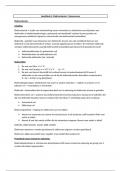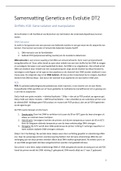Summary
Samenvatting hoofdstuk 3 identificatie van biomoleculen: Elektrochemie/biosensoren, 2e bachelor biomedische wetenschappen
- Course
- Institution
Samenvatting hoofdstuk 3 identificatie van biomoleculen: Elektrochemie/biosensoren 2e bachelor biomedische wetenschappen
[Show more]





